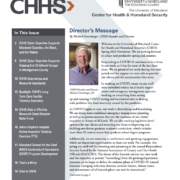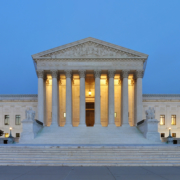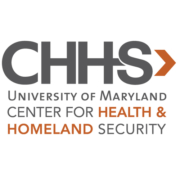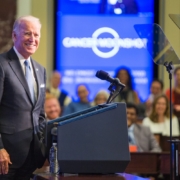It’s Time for the FAA to Start Doing its Job (Again)
By CHHS Research Assistant Alana Coopersmith
Note: The views expressed do not necessarily represent those of CHHS or the University of Maryland, Baltimore.
Boeing, the Commercial Airliner and Defense giant, has had a disastrous start to 2024. In only three months, there have been four reported commercial plane malfunctions. It would be unsurprising to find that these malfunctions stem from Boeings regulatory capture over the Federal Aviation Administration (FAA). After 20 years, it is time for the FAA to recapture the industry.
While the world may be shocked by Boeing’s 2024 track record thus far, many are likely not surprised. In 2018, a 737 MAX crashed 13 minutes after takeoff, killing all 189 people on board. Six months later, another MAX plunged six minutes after takeoff, killing 157 people. This second crash prompted the MAX to be grounded worldwide and led to intense investigations into the plane’s development. The investigations revealed, beyond the technical details of the crash, how the FAA handed over the regulatory-reins to Boeing, leading to the mass production of a plane with a deadly flaw.
The 737 MAX was imagined in 2011 as a response to Airbus’ A320neo. The A320neo was a new, fuel-efficient aircraft. To avoid losing customers to their rival, Boeing shelved plans to develop an entirely new aircraft – which would have been both timely and costly – and instead chose to upgrade the previous generation of the 737 to match the A320’s capabilities. Boeing’s pressure to rush the MAX into production “resulted in extensive efforts to cut costs, maintain the 737 MAX program schedule, and avoid slowing the 737 MAX production line.”
Boeing’s awareness of the MAX design’s safety concerns is well documented. Despite its knowledge, Boeing’s disregard of such warnings in the pursuit of performance targets is also well documented. For example, in 2013, Boeing engineers suggested installing a computer-based airspeed indicator to augment the MAX’s single external speed sensor. According to a 2020 report from the House Transportation and Infrastructure Committee, this request “was rejected by Boeing management due to cost concerns.” In 2018, Ed Pierson, a senior Boeing plant supervisor at the MAX production facility, emailed Scott Campbell, the 737 General Manager, to request a meeting about “safety concerns,” At the meeting, Mr. Pierson, a former military officer, told Mr. Campbell that the military would never tolerate a cavalier attitude towards the safety issues present in the MAX’s development, to which Mr. Campbell allegedly responded: “The military is not a profit-making organization.”
Additionally, in 2013, the National Transportation Safety Board held a two-day hearing to determine how Boeing and the FAA could have missed the potential for catastrophic failure of the 787 Dreamliner lithium-ion batteries when they were certified in 2007. In response to the fire that “sparked” concern, Al-Jazeera randomly asked 15 Boeing employees if they would fly on the 787 Dreamliners they were building. 10 of those 15 expressed they would not, due to safety concerns.
Despite these safety concerns, the FAA certified the 737 MAX in 2018, leading to the deaths of 346 people, and certified the 787 Dreamliner despite its lithium-battery malfunctions in 2007; most likely because the FAA was captured by Boeing. The FAA, since those crashes, has not effectively recaptured the industry.
Regulatory Capture is the proves by which an agency becomes dominated by the industry it is charged with. In the cases of Boeing’s MAXs and Dreamliners, the FAA did not uphold its responsibility to ensure the safety of the aircrafts – largely because it removed itself from the regulatory process altogether.
Until 2004, the FAA regulated the production of Boeing Aircrafts through a web of Designated Engineering Representatives (DER), who, although were paid by Boeing and were Boeing employees, were selected by and reported to the FAA, and the FAA retained final authority and possessed a clear view of the aircraft’s certification process. In 2004, a committee made up largely of industry backers passed a rule that the previous DERs, now called Authorized Representatives (AR), no longer reported to the FAA, but now reported directly to Boeing Managers. Direct communication with the FAA was completely severed, and Boeing was vested with vast amounts of power over the certification of its own aircraft. Boeing’s new appointment power over ARs gives it the power to align the certification process with its own interests, to the extreme detriment to the public interest.
Boeing’s flawed self-regulation is now brought to light again, as the MAX and Dreamliner aircrafts have made mainstream media appearances with missing bolts and plunging planes. As the MAX 10 production has slowed, it would be in the best interest of the FAA and Boeing to revert to the DER system for certification. It would return meaningful public oversight to the aircraft certification process, improve public trust in the FAA and in Boeing, and promote accountability. Other options seem to be flawed: further delegating oversight power to manufacturers would only exacerbate the issue; but conducting all oversight and certification work itself would cost the FAA at least $1.8 billion, require another 10,000 engineers. Although the FY2025 Budget includes a request for $1.8 billion for the Office of Aviation Safety to support production oversight and continued operational safety, it likely will still be in the FAA’s best interest to revert to the DER system, as the experience with and expertise of the latest technology is largely housed inside of the industry, rendering industry employees the most qualified to certify the aircraft.









